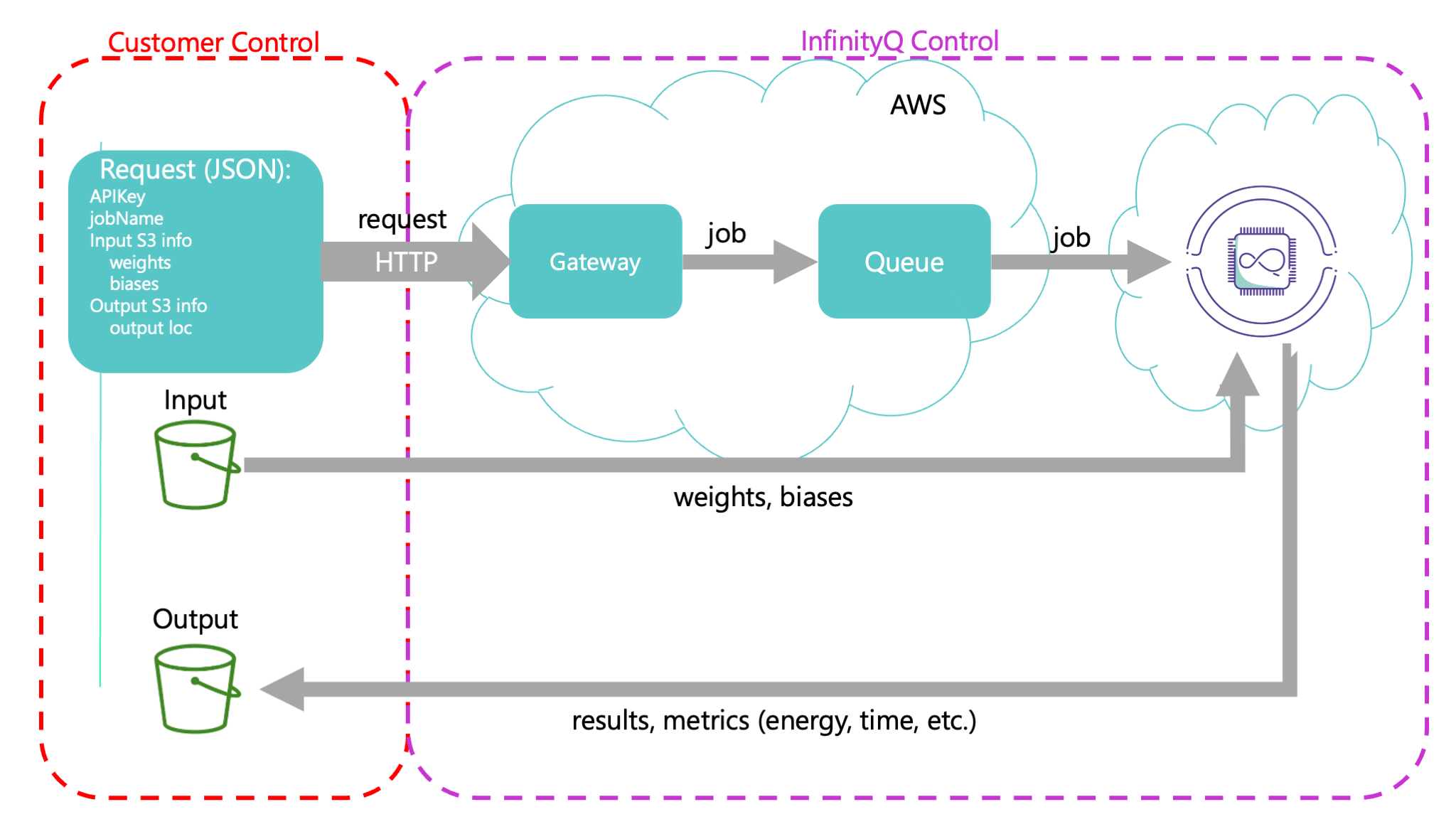About TitanQ
Solver background
The TitanQ platform is a quantum-inspired platform for optimization problems. An optimization problem is defined as a set of variables and constraints, where TitanQ finds the minimum of the set of variables, while respecting the constraints of the input problem. Each variable usually corresponds to a decision (i.e. what is the optimal amount of power for a power maximization problem, or what time a task should be scheduled for a scheduling problem). An objective is added which dictates what is trying to maximized or minimized (i.e. minimizing cost, fuel consumption, or distance travelled). Constraints are added which correspond to business or physical constraints for the problem at hand (i.e. the maximum allowable power from a power plant, or available time slots for scheduling).
TitanQ models the system by defining an Energy function for the input problem, and then sampling low energy (high probability) states from this energy function. The energy function will include both the objective and constraints for the input problem. The TitanQ platform uses the same probabilistic techniques for binary, integer, and continuous variables and supports linear and quadratic constraints.
Architecture overview
The TitanQ solver is accessible through a standard REST API but also relies on input and output filestores for larger items. At the moment Amazon S3 and Google Cloud bucket are the chosen storage medium.

Customers can retain a high level of control over their data by fully managing their buckets and only allowing the TitanQ solver to access the required files through highly specific policies and restricted user accounts.